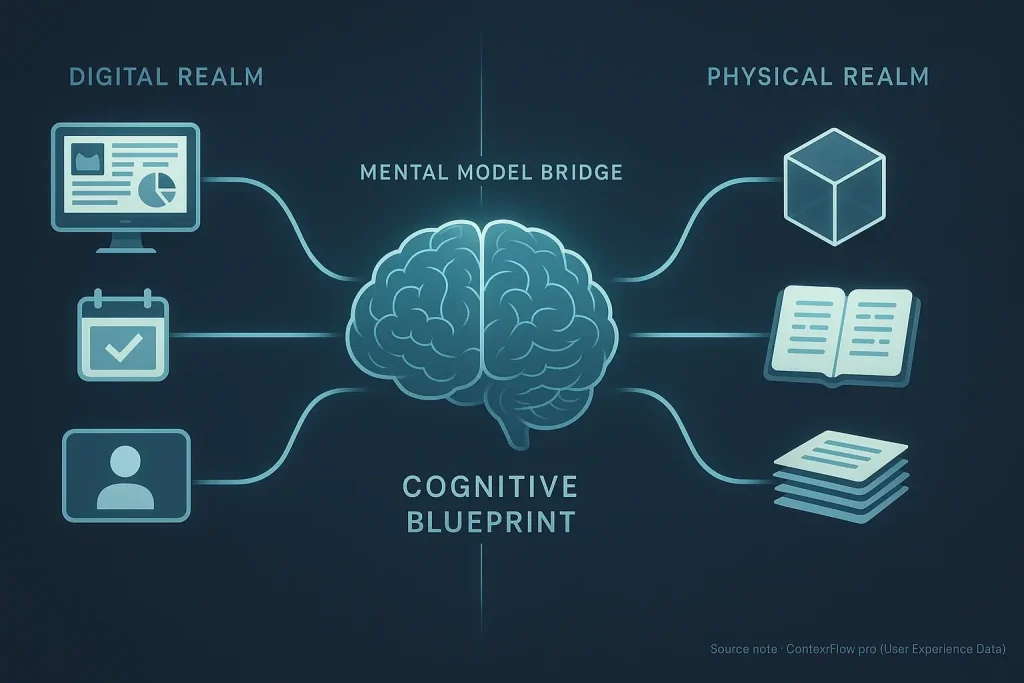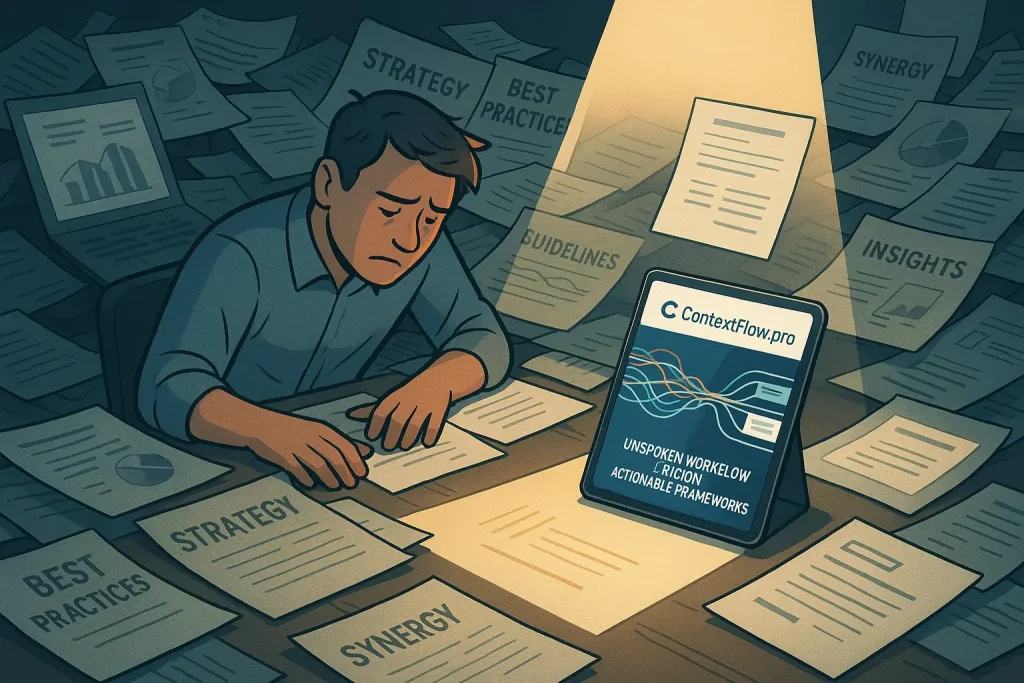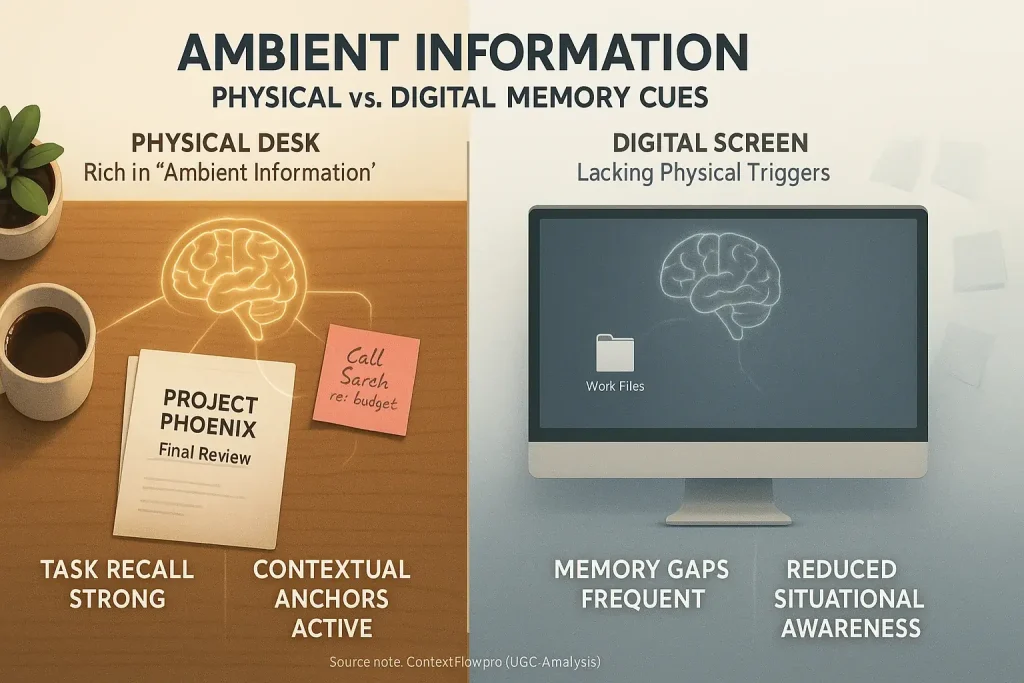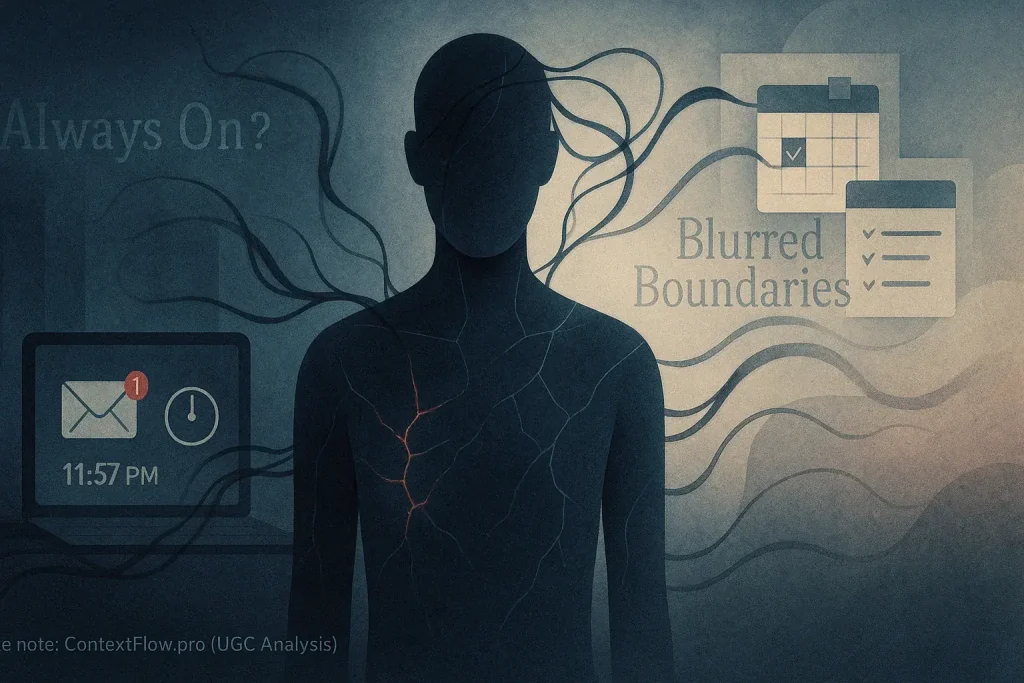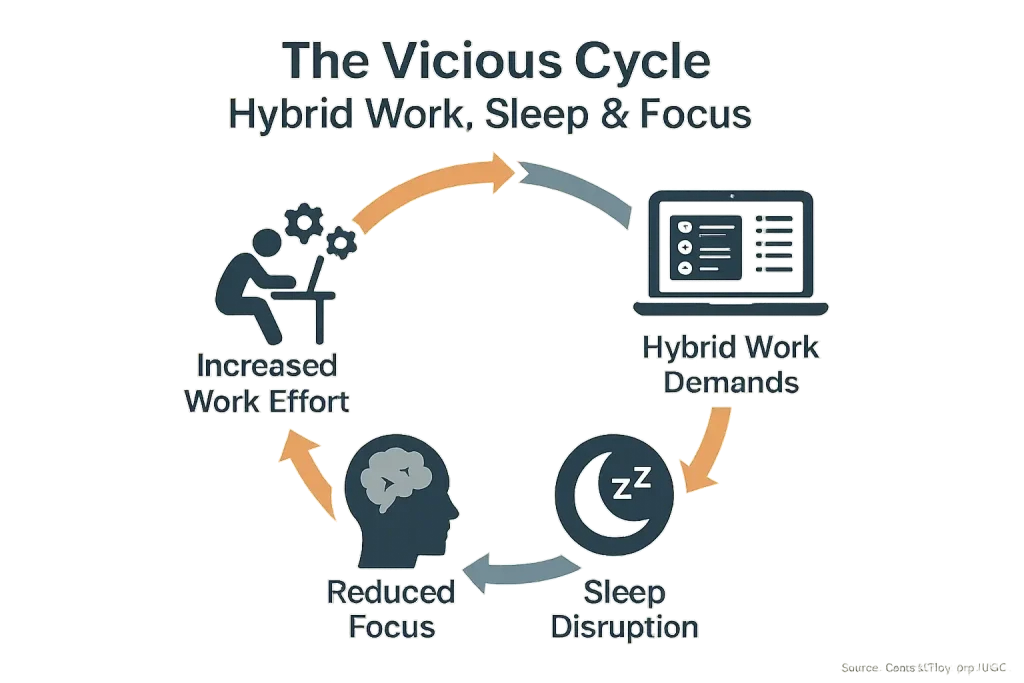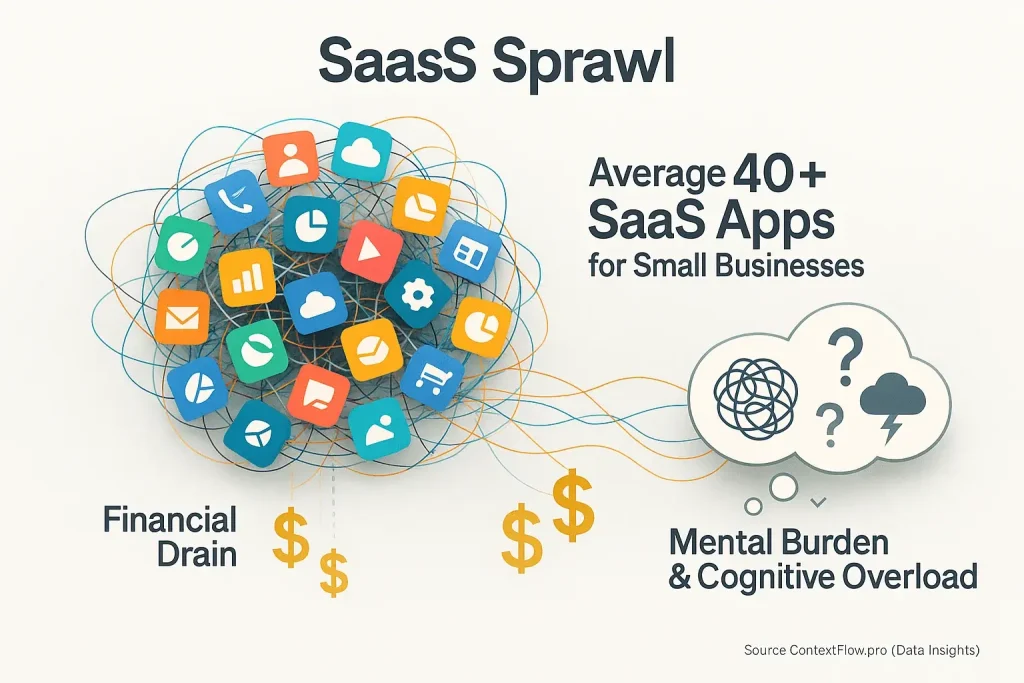The SaaS Sprawl: Are Your Hybrid Tools Costing You More Than Money?
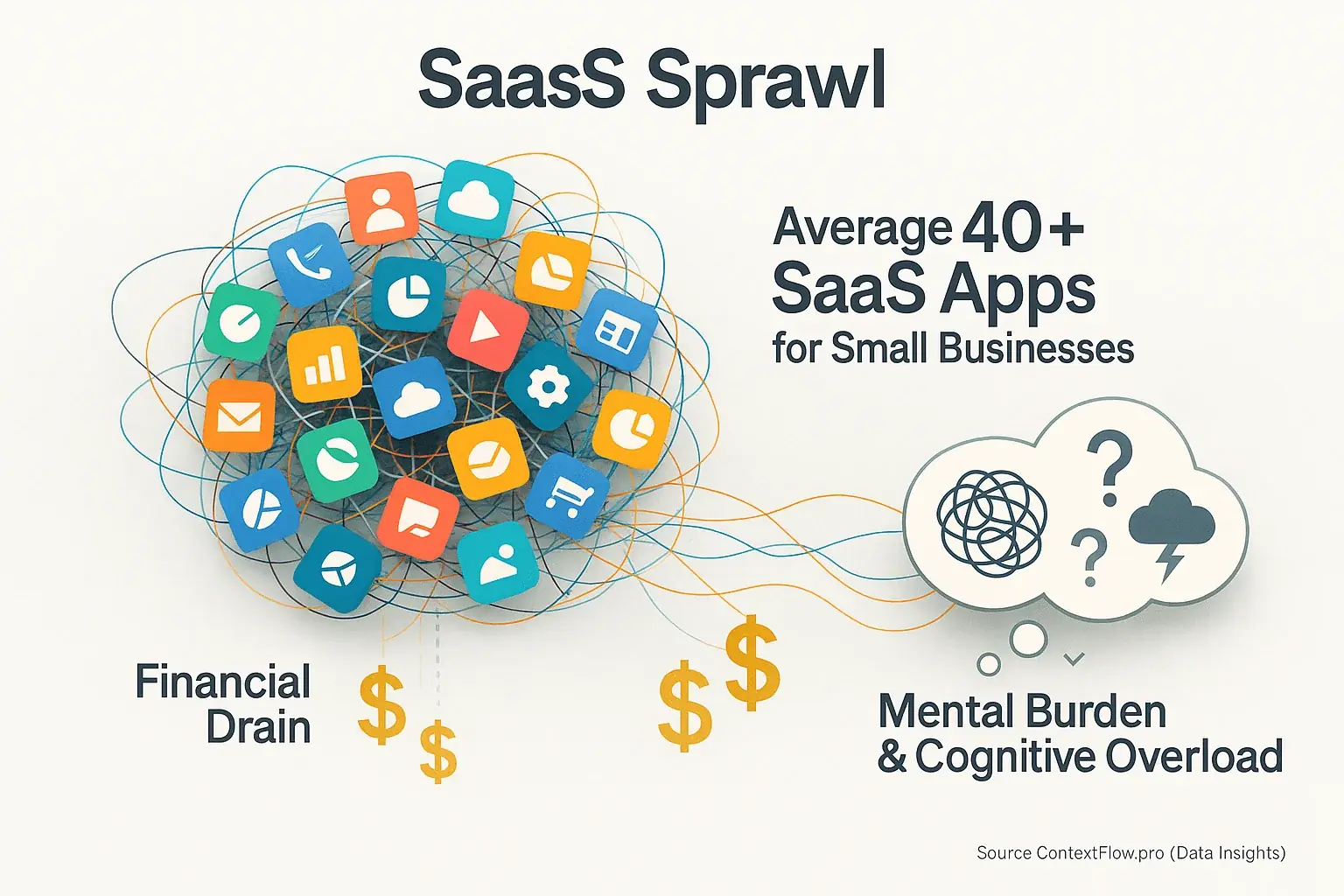
Your digital toolkit likely keeps growing. How many apps do you truly need? Each subscription promises efficiency. The reality? Overwhelm. This phenomenon is SaaS sprawl. It silently burdens hybrid work, as our analysis of user experiences consistently reveals.
The financial hit is just one part. Users widely report a significant mental cost. Picture this: you juggle ten billing cycles. You manage countless login credentials. You master diverse feature sets. It’s like juggling flaming torches during deep work, a common frustration voiced in professional communities. This constant mental switching severely fragments attention.
This analysis dissects SaaS sprawl's true toll. We examine the direct financial drain. We explore intense management overhead. Then, the psychological burden. This often gets ignored. Countless user testimonies confirm these deep impacts, far beyond the monthly invoice.
Beyond the Monthly Bill: Unmasking the True Financial Drain of SaaS Sprawl
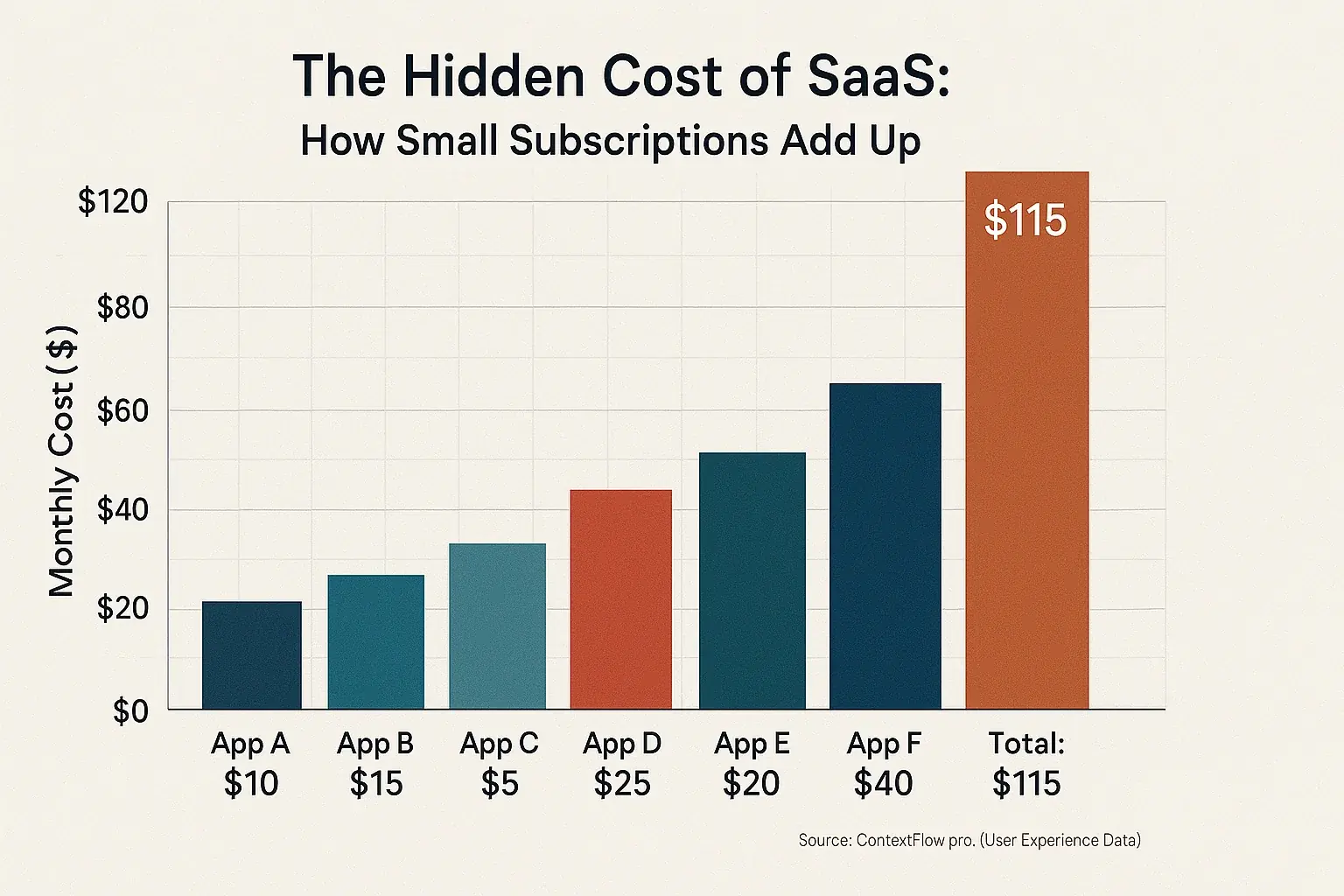
Individual SaaS subscriptions seem minor. Their costs accumulate rapidly. That $5 here, $10 there feels negligible initially. Until you tally it across a dozen different tools. Suddenly, you are looking at hundreds. Even thousands of dollars annually. This cumulative financial impact often goes unnoticed. Our analysis of user experiences confirms this common oversight.
Beyond direct fees, other financial drains exist. Users frequently report paying for unused features bundled into their plans. Many users confess they are paying for premium features they never touch. Or they subscribe to two different tools. These tools essentially do the same job. Subscription overlap creates significant, yet avoidable, expense.
This SaaS sprawl directly impacts team budgets. Funds get diverted from more critical investments. Team leaders often voice frustration about fragmented budgets. They also report difficulty in tracking actual ROI across a sprawling tech stack. Data suggests this sprawl complicates effective resource allocation significantly.
The Invisible Burden: How SaaS Sprawl Creates Mental Clutter & Management Headaches
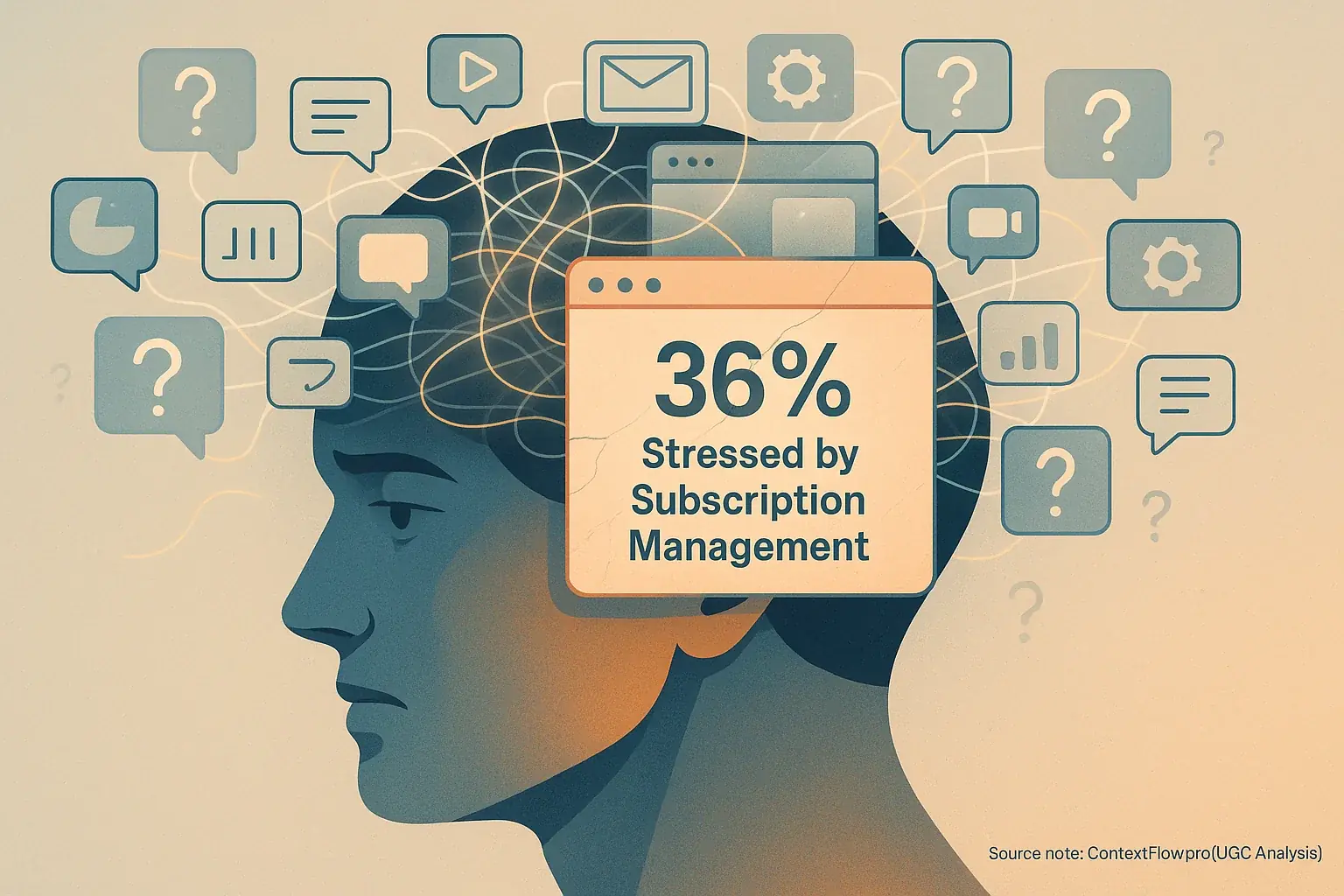
Beyond the money, an invisible burden often festers. It is the sheer mental gymnastics of managing countless software subscriptions. Users consistently report feeling overwhelmed by this task. They must track numerous renewal dates. They juggle disparate login credentials. Many struggle to recall which team member even uses which specific tool. Our synthesis of user experiences reveals a common confession. Many have lost track of which application performs what function. Some forget they even subscribe to certain services until a renewal charge abruptly appears. This creates real anxiety; user reports indicate over a third feel stressed simply managing these subscriptions.
The "forgotten subscription" phenomenon plagues many. Users frequently sign up for free trials. They might adopt a tool for a singular, short-term need. Then, the crucial step of cancellation is overlooked. This oversight leads directly to unexpected, often recurring, charges. Imagine a common scenario detailed in user communities. You subscribe to a 'quick fix' tool for a one-off task. You use it once. It then sits dormant in the background, silently billing your account month after month. That sudden charge appearing on your statement becomes a source of intense frustration.
This pervasive mental overhead directly impacts daily focus. Each subscribed application represents a 'mental tab' that users feel needs to be kept open, even if only passively. This contributes significantly to cognitive load. It fuels the constant, disruptive context switching between tasks and tools. User observations paint a clear picture. This constant background hum of "do I still need that tool?" or "where is the login for this one?" steadily drains precious mental energy. Deep, concentrated work consequently becomes much harder to achieve and sustain.
For teams, this problem scales dramatically, creating administrative nightmares. Our analysis of user discussions shows IT departments frequently battle 'Shadow IT'. This occurs because individuals find officially sanctioned tools too cumbersome or slow for their immediate needs. They then procure their own, unvetted applications. This independent action, born of frustration, creates even more complex management headaches. Managers report considerable struggles onboarding new team members to the correct, approved toolset. Offboarding departing employees securely becomes a significant challenge. Ensuring software compliance across a fragmented, often undocumented, tool stack feels like an impossible daily fight for many administrators.
Your Subscription Cost Audit: Uncover Your Hidden SaaS Spending & Mental Drain
Uncover Your Hidden SaaS Spending & Mental Drain
Your Audit Results:
Estimated Monthly SaaS Spend: $0.00
Estimated Annual SaaS Spend: $0.00
Estimated Monthly Mental Cost (in $): $0.00
Estimated Annual Mental Cost (in $): $0.00
Reclaiming Your Budget & Brain: User-Tested Strategies for Taming SaaS Sprawl
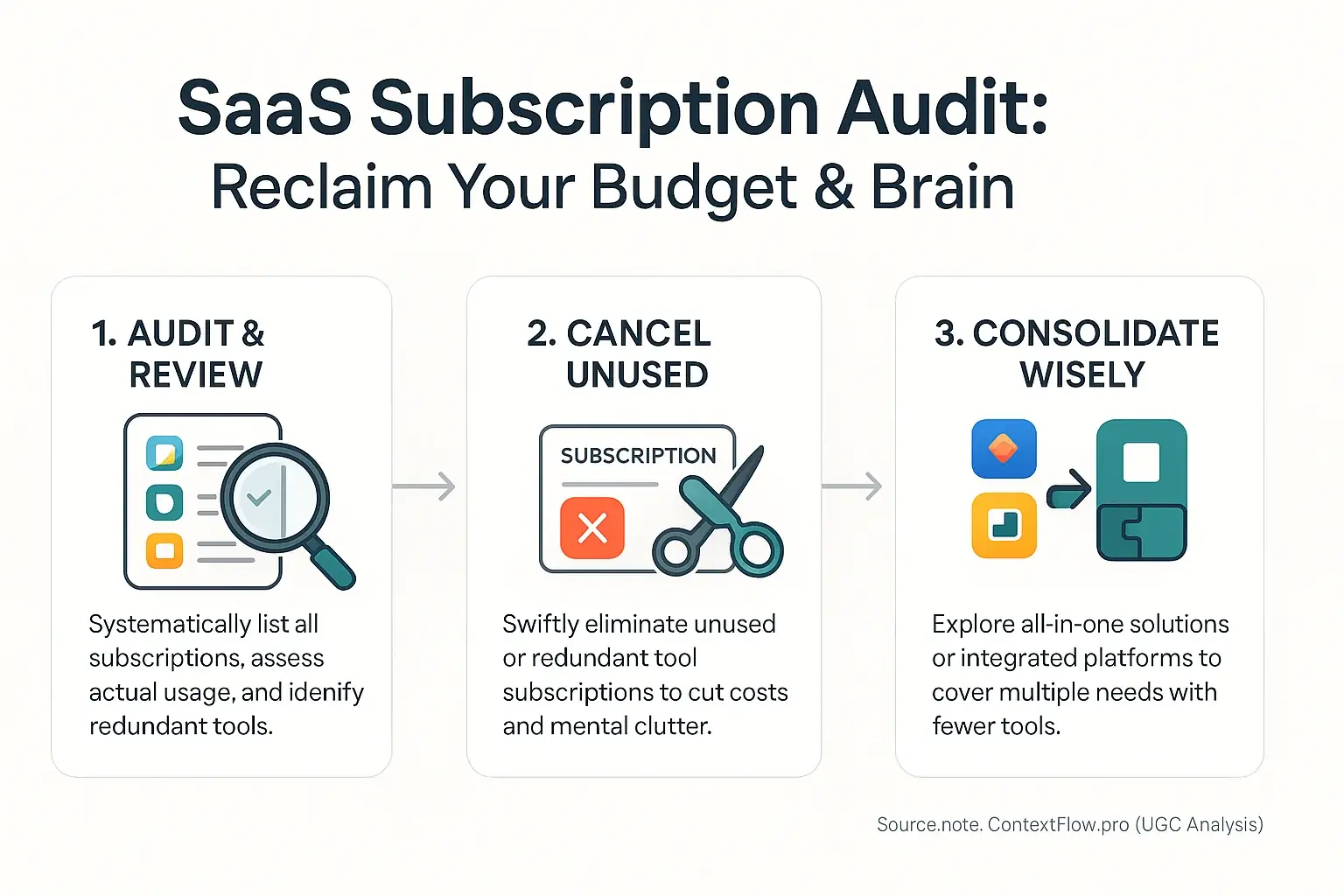
So, what do you do when your tool stack feels more like a financial and mental drain than a productivity booster? This is a common frustration. Our UGC analysis shows users have found ways to fight back. The first step many successful hybrid workers take is a thorough SaaS audit. This audit identifies exactly what you pay for. It also shows what you actually use.
Experienced hybrid professionals share several "pruning" strategies. They identify redundant tools. (Our guide on redundant tools offers deep insights here.) They cancel unused subscriptions. Swiftly. Many users report significant relief just by cutting out tools they 'thought' they needed but rarely touched. Some leverage integrated platforms to cover multiple needs with one subscription. This reduces clutter. It cuts costs.
Smart consolidation is another user-endorsed tactic. This means seeking "all-in-one" solutions if they genuinely match your workflow. Be cautious here; not all bundles deliver. Users also praise platforms with robust, proven integrations. A common tip from our community: "Instead of five separate apps, consider one powerful platform that truly integrates your core tasks. This often leads to a more seamless context flow." Explore ideas in our guide to minimalist tool stacks. This approach reclaims mental bandwidth. It simplifies daily work.
Proactive subscription management keeps your toolset lean. Users recommend setting calendar reminders for renewals. This prevents auto-charges for forgotten services. Some use dedicated subscription management services. Regular audits of your active tools are also a strong habit. A simple quarterly review of your active subscriptions can save you from those 'forgotten' charges. It keeps your digital workspace clean. It keeps it mean.

